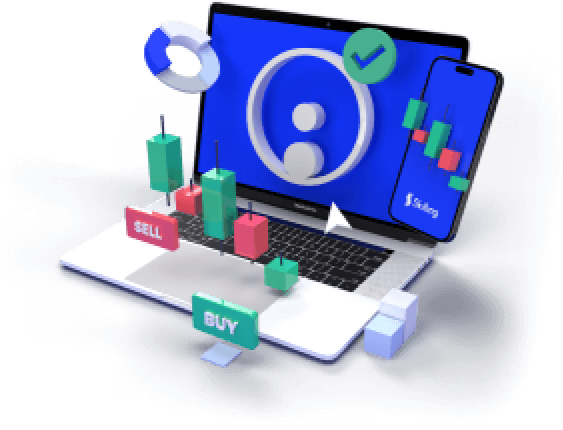In the world of active trading, tools matter. Your platform isn’t just where you view charts, it’s where you make split-second decisions that can define outcomes. For many, the two most widely considered platforms are TradingView and MetaTrader4 (MT4) . While both are popular, they serve different types of traders with distinct preferences.
In 2025, with volatility surging across forex, indices, and commodities, the choice between TradingView and MT4 is more relevant than ever. This comparison takes a closer look at each platform, not just in terms of features, but how each performs under pressure when real capital is on the line.

Charting Technical Analysis: Where TradingView Shines
For traders who live by the chart, TradingView is often considered the gold standard. The web-based interface is smooth, responsive, and intuitive, and its library of technical indicators is extensive. Whether you're using classic tools like RSI and MACD, or custom-coded Pine Script indicators, TradingView’s flexibility gives technical traders a significant edge.
Real-time syncing across devices also means you can monitor positions from your phone, tablet, or browser without needing to install software. And for those who trade based on social sentiment, TradingView’s active community adds another layer of real-time analysis and insight.
MT4, on the other hand, provides solid technical analysis tools, especially for forex traders, but it lags in terms of interface quality and modern usability. While expert advisors (EAs) and custom indicators are available, the setup often feels dated in comparison.
Execution Speed & Broker Integration: MT4 Holds Its Ground
Where MetaTrader4 still stands strong is in execution speed and direct broker integration. Built with forex and CFD execution in mind, MT4 offers robust order handling, fast trade execution, and customizable risk management settings. Many brokers, including Skilling, have optimised MT4 servers for minimal latency and slippage.
For algorithmic traders and scalpers, this level of execution consistency is essential. MT4’s support for automated strategies, one-click trading, and custom scripts makes it a reliable workhorse for traders focused purely on execution performance.
TradingView’s execution capabilities depend entirely on broker integration, and not all brokers offer full functionality. While TradingView’s interface may be ideal for analysis, the actual execution flow may be routed externally or with more latency, depending on the setup.
Mobile Trading & Accessibility
In 2025, mobile trading is no longer a luxury — it’s a necessity. Both TradingView and MetaTrader4 offer mobile apps, but the experience differs noticeably.
TradingView’s mobile app mirrors its web-based design, offering an elegant, fast-loading charting environment. It’s ideal for monitoring positions, drawing trendlines, and switching between asset classes. Alerts sync seamlessly, so traders never miss key price movements.
MT4’s mobile version is more utilitarian. It does the job but lacks the refined charting experience and responsiveness of TradingView. However, for entering or closing trades on the go, especially with broker-side execution, MT4 still delivers reliable performance.
Supported Asset Classes
Another key factor when choosing between the two platforms is asset class support. TradingView shines in diversity. You can analyse everything from forex pairs and stock indices to crypto, commodities, and even economic indicators, all within one interface.
MetaTrader4 , initially designed for forex trading, supports CFDs on various instruments via broker add-ons, but lacks native support for newer markets like crypto or niche indices unless explicitly enabled by the broker.
For traders who want to keep all charts and markets under one roof, without switching platforms, TradingView presents a more flexible choice.
Algorithmic Trading & Automation
Active traders who rely on automation will find MT4’s expert advisor (EA) framework still robust in 2025. Custom bots can be built in MQL4, backtested, and deployed with full broker-side execution. This gives algo traders a level of control that TradingView currently cannot match.
TradingView’s Pine Script , while powerful for custom indicators and alerts, does not support full trade automation on all brokers. As a result, traders seeking to run bots or fully automated strategies are generally better served with MT4.
Skilling’s Role: Best of Both Worlds
Skilling gives traders access to both platforms , allowing you to choose the one that best suits your style. For chart-focused, discretionary traders, TradingView offers a clear edge in visual analysis. For execution-driven strategies or automated trading, MT4 remains a proven, dependable tool.
With Skilling’s deep integration on both sides, traders can analyse on TradingView and execute with precision via MT4 — or even combine the two for a hybrid workflow.
Capitalise on volatility in share markets
Take a position on moving share prices. Never miss an opportunity.
71% of retail CFD accounts lose money.

Conclusion: Which Platform Wins?
There is no universal winner; the best platform depends on your trading style. If you prioritise clean visuals, powerful charting, and multi-asset flexibility, TradingView is a strong choice. If your edge lies in speed, automation, and precision execution, MetaTrader4 still leads.
For most active traders in 2025, the ideal solution may not be choosing one or the other, but knowing when to use both.











